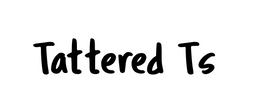Social injustice examples include gender roles, class-based society, unfair distribution of wealth, and racism. Using these examples, you can discuss the importance of raising awareness leading to positive change. The first step to bring social justice is for young people to address their experiences and stand up for what they believe is right.
Class-Based Social Injustice
Whether you have thought about this or not, social class is a meaningful category of identity, there's no denying that class is an important contributor to common human rights violations. It is also an important contributor to precariousness for many. This article will explore examples of class-based social injustice.
The definition of a social class is difficult to define. Generally, it is a group of people grouped together in a hierarchy. Often, classism is based on a perception of wealth or occupation. Other forms of classism can involve perceptions of social status, accent, and level of education. In fact, classism can be a form of prejudice, especially when it involves the use of privilege to advantage some and disadvantage others.
The concept of class has been linked to social justice since the Industrial Revolution. Most approaches to social justice share a broad set of goals: inclusion, fairness, equality, and participation. These are often considered to be the pillars of a just society.
Gender Roles
Examples of gender roles in social injustice affect policies, and laws, as well as the expected behaviors of individuals. Gender roles also provide grounds for discrimination.
Gender norms are based on acceptable and appropriate actions for men and women. They shape the social attitudes of individuals and the policies and laws they implement. They also shape the social attitudes of the society.
Gender roles also influence how children view school. In some countries, even today, these archaic views may prevent girls from exercising their right to education.
Gender norms are difficult to change, as they stem from the traditional perception that women should be housewives and caregivers. Often, young men are driven by gender norms to present themselves as strong, competitive, and unburdened. As people's perception of traditional gender norms change, issues like sexuality preferences, marriage, rape, and abortion rights cause us to stop and re-evaluate our views on social justice.
Unfair Distribution of Wealth
Using a wealth-based measure, the United States ranks near the top among all developed countries in terms of wealth inequality. The richest ten percent of the population held 70 percent of the nation's wealth in 2021. That figure has risen since the 1980s. The share held by the next forty percent also declined over time.
According to official poverty statistics, the overall poverty rate in the United States has decreased in the last four decades. However, these statistics are not a dependable guide to trends in poverty. Among other problems, they exclude the impact of tax policies and other government programs.
The top ten percent of the income distribution receives almost half of all income, while the top one percent owns two-fifths of all wealth. Wealth is concentrated, and it reduces the amount of demand in the economy.
Racism
Among the many social injustices that exist in our world, racism is one of the most common. Racism creates barriers to economic opportunity, access to healthcare, and other services. It can also lead to other intersecting inequities.
Racism is often a result of overt prejudice and discriminatory action. However, it is important to recognize that racism also takes place in subtle forms. These forms can include discrimination in housing, education, employment, and health care. This form of social injustice can only be recognized by examining all the contexts in which it occurs.
In the United States, racism has long been a problem for members of racial and ethnic minority groups. For example, the health-care system is structurally biased against racial and ethnic minority populations. While the health care system is often used to perpetuate racism, evidence-based tools can address health disparities and improve care quality.
Community College Centers for Social Justice
Community college centers for social justice provide students with educational and service opportunities. These programs address systemic issues that students face, such as discrimination, marginalization, bullying, and oppression. These centers promote inclusive communities on campus and foster critical conversations about social issues. They are committed to developing leaders who are active and dedicated to bringing awareness and implementing programs for social change.
One example is The Center for Social and Criminal Justice at Lehman College. This type of dynamic resource is a key step toward awareness and positive change. Their program engages individuals who are affected by the criminal justice system, as well as the community. The center is dedicated to building a strong network of restorative justice practitioners. This notable center has earned the John and Suanne Rouche Excellence Award.
Another resource is The Social Justice and Equity Forum, which explores contemporary issues, including voter registration, education campaigns, and social justice issues related to poverty, crime, and health. The forum meets 13 times during the Fall semester. It is open to students, faculty, and staff. These grass-roots community programs are important starting points bringing real solutions and involving young people in positive actions that have influence in people's lives and communities today. These resources bring help, community involvement, and shape the views of young people. Tattered T's clothing supports efforts to bring awareness and resources for social justice to communities.

